The Contact Center world has seen many changes in the last few years and Virtual Agents have emerged as one of the “hot trends”. We hear Artificial Intelligence being positioned as the answer to a myriad of problems a contact center might be facing, but it is often difficult to frame how it applies in practice. This leaves most organizations interested, curious, and occasionally confused as they are looking for implementable solutions to help them address real challenges.
I am hoping to provide a bit of clarity on not just the terms, but what they mean for business today.
What Exactly is a Virtual Agent?
Part of the confusion comes from the different concepts that are all commonly referred to as “virtual agents”. Are we talking about a chat bot? a speech application? an agent assistant? a voice assistant, such as Alexa?
When we talk about virtual agents, we are in fact about talking about all the above – in some fashion.
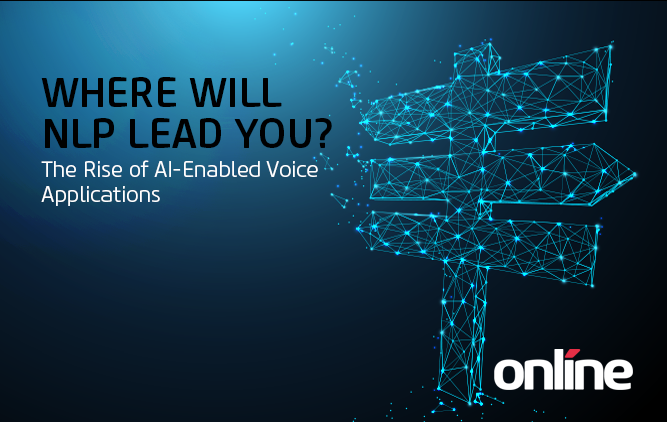
Perhaps the simplest way is to reference them as a category of speech-enabled applications that use Natural Language Processing (NLP). We know that these modern applications are replacing or improving on traditional IVRs, and are often thought about as Virtual Agents.
The diagram below shows where Virtual Agents can be applied in a typical contact center. As you can see, some agents can be customer-facing and others can be agent-facing, using different channels to interact with users. The box in red demonstrates the Virtual Agent/NLP functionality we will be highlighting in this blog.
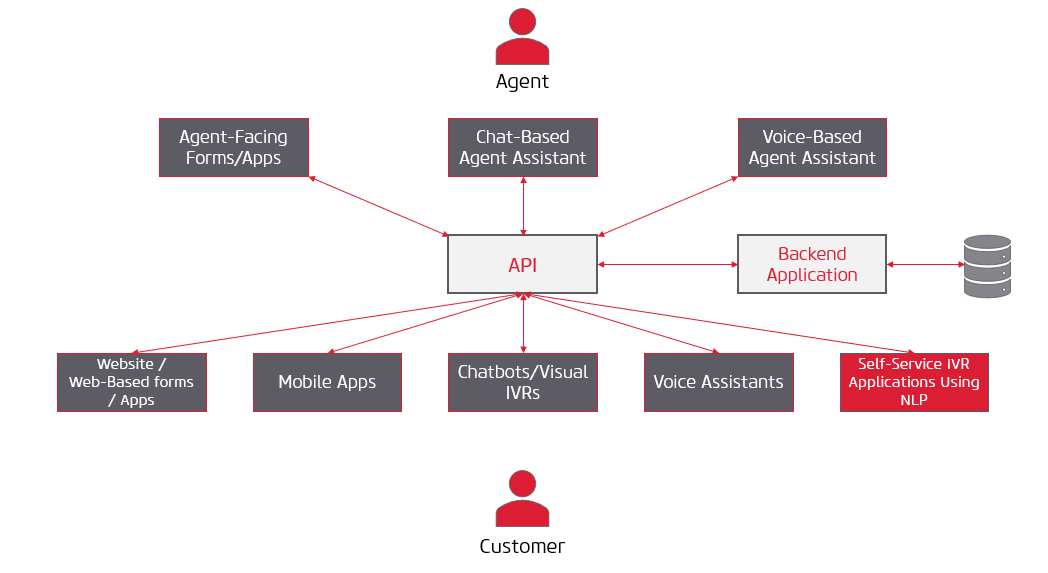
The NLP Difference
One of the distinctions between traditional IVRs and modern virtual agents is the use of Natural Language Processing (NLP), which makes the development of speech applications much faster and cost-effective. There are many NLP platforms but some of the most common are Amazon Lex, Google DialogFlow, Microsoft Luis, or Rasa. Many Contact Center as a Service (CCaaS) and Communication Platform as a Service (CPaaS) providers also have built in NLP or close integration with a NLP, so their customers can create rich virtual assistants on their platform.
Benefits of NLP
The first big benefit over traditional IVRs is that NLP platforms typically either have speech-to-text built in or can be tightly integrated with a speech recognition platform. The NLP vendors are constantly tuning their speech-to-text capability which takes that cumbersome burden off the voice application developer. For anyone who has worked with legacy IVRs and Speech Recognition, the new capabilities provided by NLP platforms are simply amazing.
The second major benefit is that these solutions also provide tools to quickly train the NLP by identifying utterances and matching them to a correct intent. This training starts during application development and is refined in an AI-assisted cycle of continuous improvement as the NLU learns new utterances to be matched with its library of intents.
This allows IVR developers to build navigational applications with open-ended “How can I help you?” dialogues that are more likely to identify intent correctly and provide the customer with the right outcome. Intent can be something as simple as talking to an agent for a billing issue, or something more complex like booking an appointment.
What makes NLP different from traditional speech driven IVR applications is the ability to fill pieces of data, slots, and ask additional questions if all the slots are not filled.
The logic built to make a Virtual Agent work in an IVR application can also be reused into a chat bot available on the company’s website or mobile app. It can also be deployed into a Voice Assistant like Alexa and Google Assistant. But in this article, we will focus mainly on using a Virtual Agent in an IVR application for navigation and self-service purposes.
NLP and Modernizing the IVR
The navigation scenario is the first one that comes to mind when modernizing an IVR. “How can I help you?” can be a powerful question that opens the way to a series of micro-applications, each focusing on a specific intent. This navigation application can be done in an iterative manner, adding new intents as the application evolves and analytics is used to better understand the behavior of callers. The ability to see reports on missed utterances allows developers to continuously improve on the model and add new intents if required.
Often, demo applications show customers calling and the cell phone number being recognized “Hi Alexandre, how can I help you?" This scenario is rarely realistic in a production environment for security reasons. It is generally necessary to not only identify but also to authenticate the caller, the phone number is not always the one on record, and at a minimum, a PIN or password of some kind is needed.
Our Customer Engagement and our Security practices can help you make sure the authentication mechanism is effective and secure but user friendly, striking a good compromise between these competing requirements.
Once the customer is identified, it is possible to determine a likely reason for their call, based on context such as who the customer is and their journey through the different contact points with the Enterprise. This allows redirecting the flow of the call to the correct destination, thus improving the customer experience.
For example, if the customer just purchased an item, they could be asked if they want to get package tracking information.
The business rules to determine the next best action can be defined through traditional business analysis or the use of predictive technologies and Artificial Intelligence, such as Salesforce Einstein, which our Salesforce team can help you achieve.
NLP and Self-Service Applications
When it comes to self-service applications, it can be hard to determine which ones to develop into a Virtual Agent. There are ways to find the low-hanging fruit that bring maximum benefit for minimum costs. Here are a few things to consider as part of your evaluation:
- Do the web site and mobile app have self-service applications that can be made into a voice application?
If these applications exist, the underlying infrastructure like database, backend applications and API have already been developed and the effort is only a Voice User Interface (VUI) one as opposed to building the whole stack all the way to the database. All channels should have similar business rules except to customize the experience to the interface, although some optional fields present in a web page could be skipped in a voice application. - Queries to play back information, such as package tracking or playback of a balance are classic scenarios and easy to implement with modern text-to-speech. But where NLP excels is with form filling, since it can fill the missing elements required to complete the transaction, like scheduling an appointment.
- Other processes that have not made it to the website can be automated but will require a bigger effort. In that case doing a joint project to make the application available on the web sites and mobile applications could be the most cost-effective way to go. This would be a full IT project, not just a contact center one.
- To go deeper, a task analysis of what agents spend their time on and which of these tasks could be automated might be needed. We want to focus on low value tasks, those that perhaps do not bring revenue, that are labor-intensive.
For example, an address change could be a good candidate if it happens often enough. Good reporting of the reason for each call can be one way to get some insight into what agents spend their time doing. Speech analytics is also a valuable tool to flag what customer are calling about.
NLP, Virtual Agents, and the Connected Customer Experience
In the end, the goal is to improve the customer experience and meet the customer where they are. It is not always possible or timely to go to a website or any other text-based channel and many customers like the ability to multi-task thanks to voice channels. It can be worth the exercise to see what agent tools could be made into customer-facing tools.
There will always be interactions that must be done in person, but careful review of these can provide insight into additional opportunities for self-service. Bringing the voice channel at the same level as the text ones is only a first step, but an important one.
Sometimes it’s necessary for the Virtual Agent to transfer the interaction to a human agent. When that happens, the Virtual Agent should send any useful information gathered in self-service along with the interaction. Especially if the customer has already completed part of the transaction. One of the most frequent complaints we here about transfers from virtual to human agents is “I always have to repeat everything I’ve said or done.”
Making self-service, along with other historical context, available to the agent will avoid repeating information that was previously asked from the caller and improve the experience.
Conclusion
As organizations have been forced to pivot due to the pandemic, our customer service landscape has transformed to become an even more critical “front door” for the business.
In the last few months, we have seen companies dealing with challenges from COVID-19 use several strategies to manage increased call volumes as well as training and hiring new agents in a work from home environment. AI-powered Virtual Agents with omnichannel functionality has been a leading solution to improve the performance of the contact center and help increase automation. Proven to directly improve the bottom line and staff retention.
About Online: Online Business Systems can help you navigate these challenges you may be facing though our well-rounded understanding of the operations of a contact center and the supporting technology behind it. We are leaders in the customer experience space as we go beyond technical capability by bringing the passion of our ‘Onliners’ who can accompany you through every step of your journey.
Whether you use Amazon Lex, Google Dialogflow, or even if you haven’t adopted a technology, we can help you find the right solution tailored to to meet your needs.
We support several cloud and premise contact center software vendors and are a preferred consultancy to companies such as Five9, Genesys, Salesforce, and Amazon Connect.
If you’re considering implementing Virtual Agents into your business model, let us know.

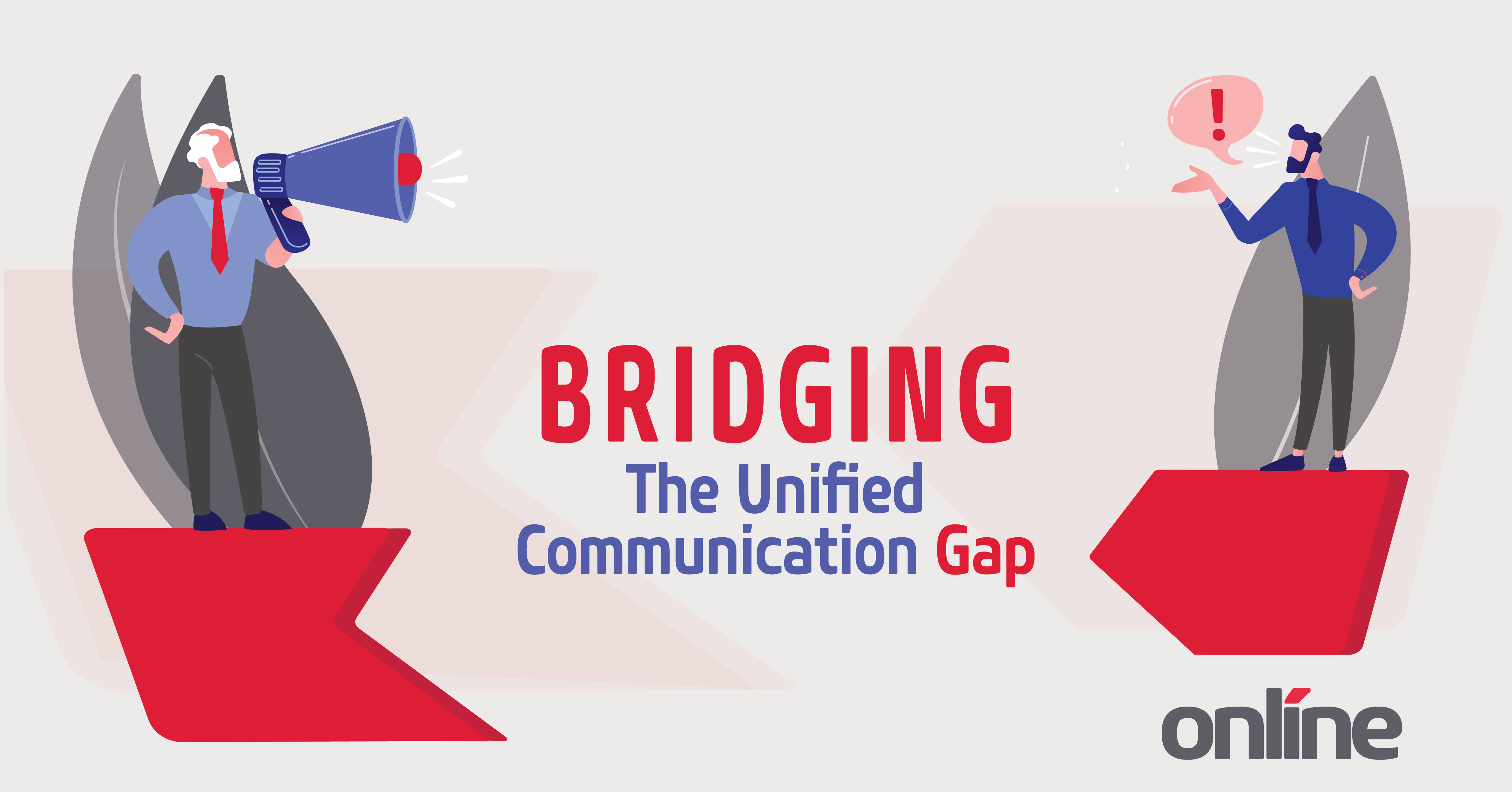
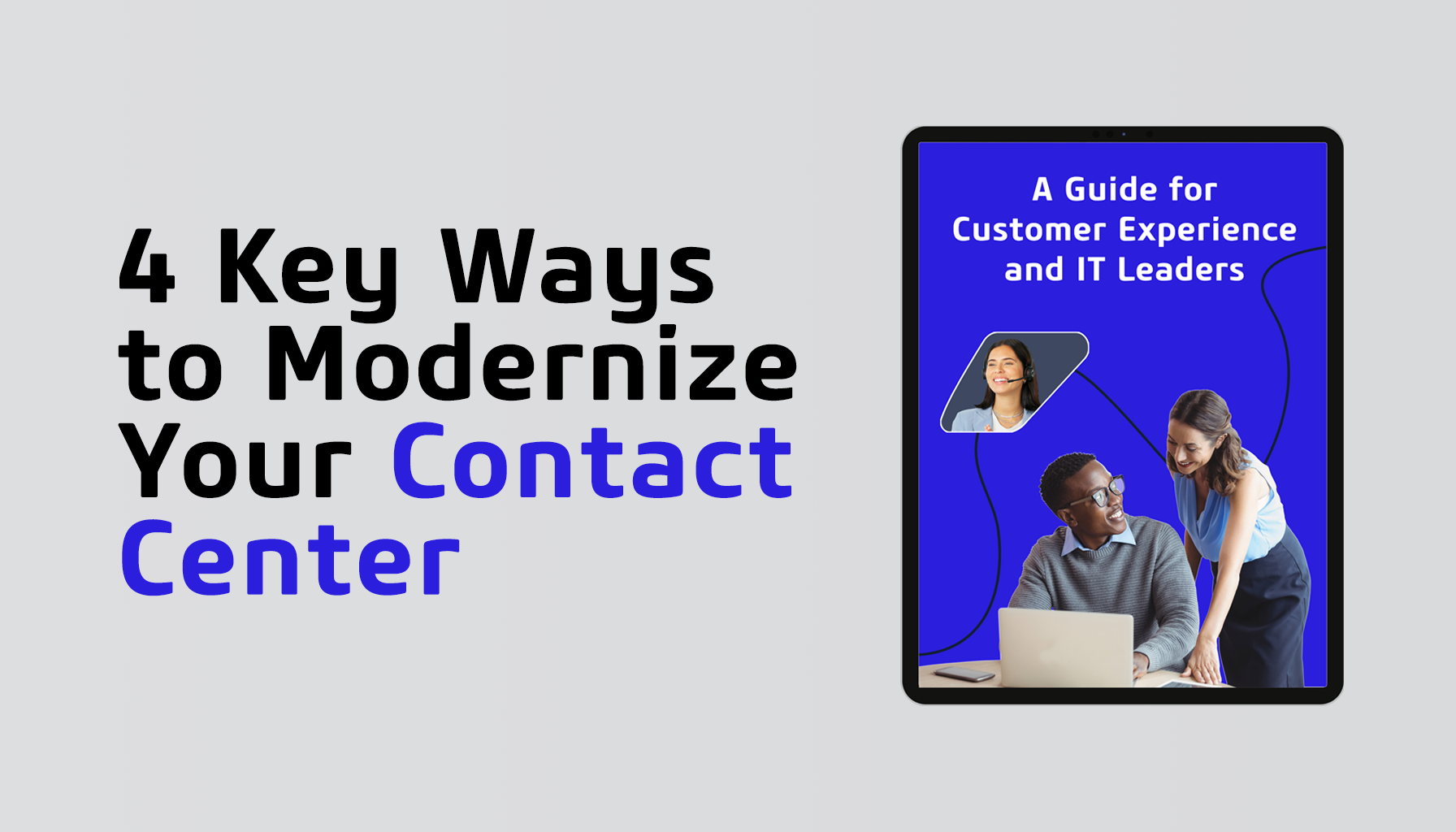
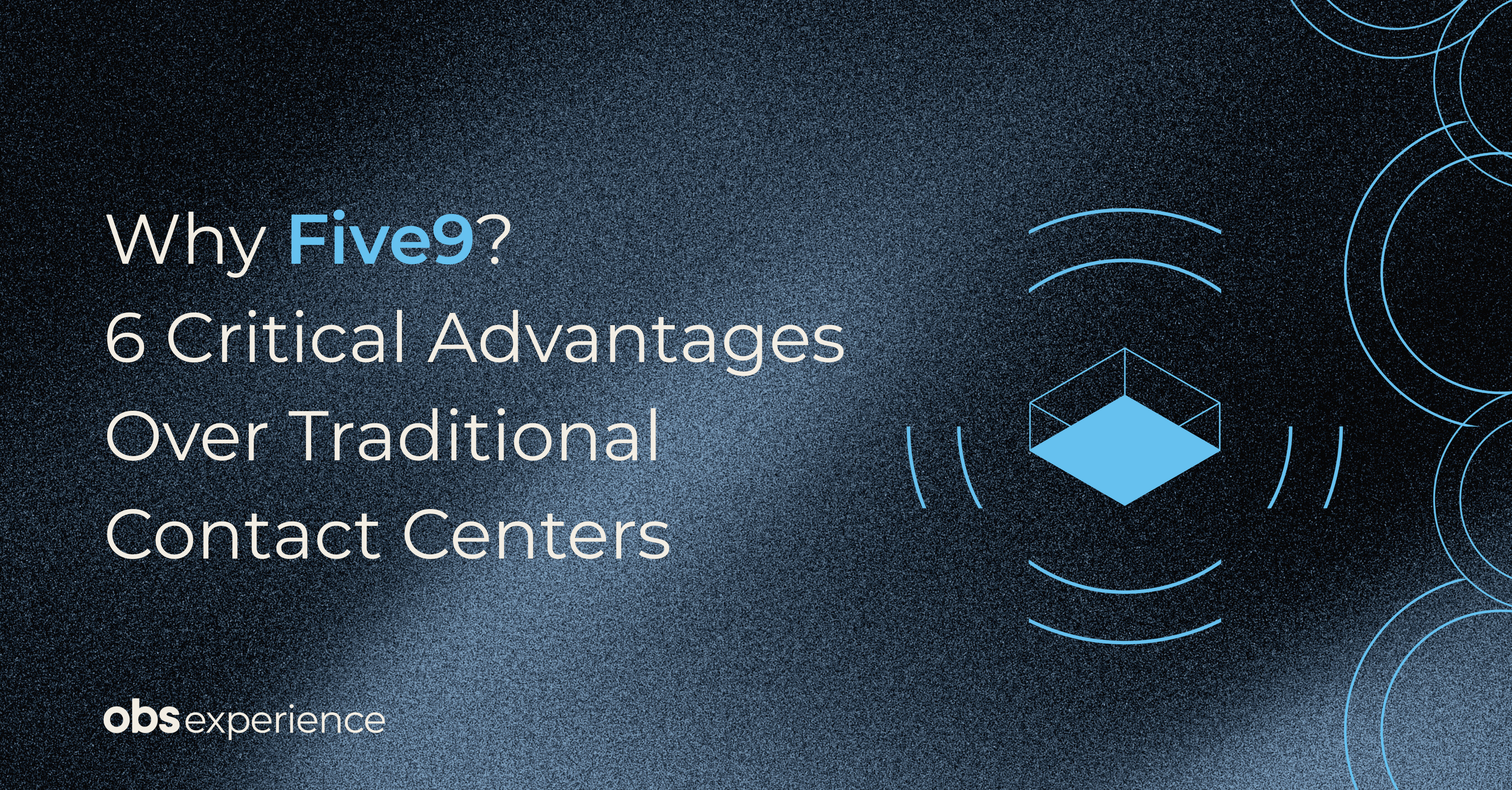
Submit a Comment